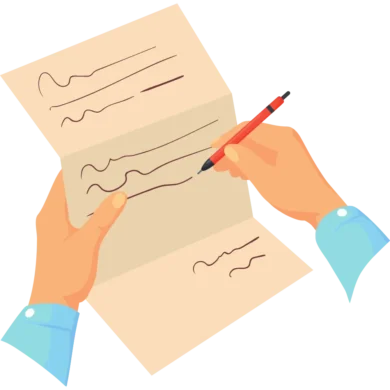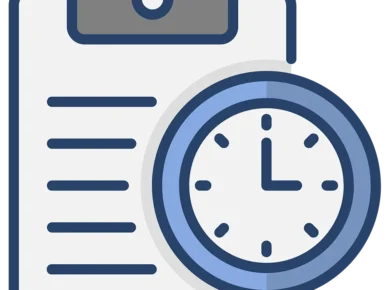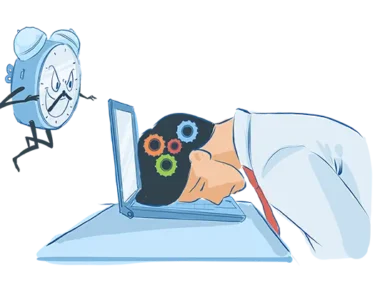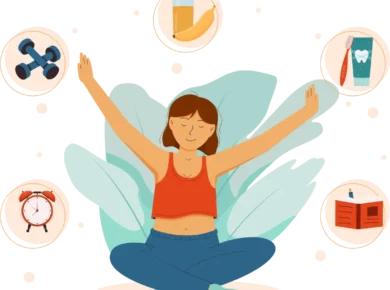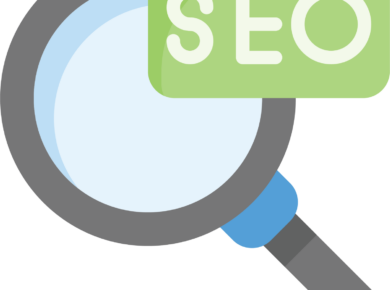As a freelancer, your ability to communicate efficiently can be just as crucial as your professional skills. Whether you’re reaching out after an initial proposal, following up on a project interview, or nudging a client post-offer, the art of follow-up is an essential tool in your arsenal. Let’s explore how you can craft messages that not only get noticed but also pave the way for successful collaborations.
The Importance of Follow-Up Messaging in Freelancing
There’s no overestimating how follow-up communication can shift the needle in your favor. In the freelance world, a strategic and timely follow-up can reignite client interest, expedite decision-making, and salvage projects on the brink of fading away. The essence of success here lies in timing; in an era of brief digital attention, follow-up messages act as subtle yet persistent nudges showcasing your dedication and readiness to deliver. For a deeper dive into mastering the art of follow-ups, please read the detailed article: Follow-Up: When, How, and Why It Makes All the Difference.
Knowing When to Follow-Up
It’s more of an art than a science, but knowing precisely when to send that next message can make all the difference. For instance, immediately thanking a client for a meeting can be flattering, but a more strategic ask for the next steps might require a day or two of patience. Learn the subtler signals of your client’s communication patterns to find the right moment.
Types of Situations Requiring Follow-Up
Situation-based follow-ups can differ significantly in their execution. Each specific scenario—after sending a proposal, following up an interview, or post-project—deserves its customized approach to ensure effectiveness. For instance, a follow-up to deliver on the proposal can be more direct, focusing on the points discussed. In contrast, a post-interview follow-up reinforces a conversation or newly discussed ideas.
The Art of Crafting Follow-up Messages
Follow-up messaging is a nuanced skill that involves a strategic interplay of timing, tone, clarity, and personalization. Your follow-up message is an extension of your professional image and brand. Here’s how to nail each element to make your message stand out.
Timing Is Key
The timing of your follow-up message can significantly impact its reception. A general rule of thumb is to wait one to two weeks after your initial contact to follow up. However, this can vary depending on the context. For example, after a project interview, 48-72 hours is a respectful window to express your continued interest and enthusiasm.
Tone and Professionalism
Your follow-up message should maintain a professional tone while being warm and personable. Avoid overly casual language, but don’t be so formal that you seem distant. The goal is to remind your potential client of your previous interaction in a positive light.
Clarity and Brevity
Your message should be easy to read and understand quickly. Busy clients don’t have time to sift through lengthy communications. State the purpose of your follow-up concisely and use bullet points if necessary. A clear call to action, like requesting a meeting or a response by a specific date, should be easy to spot.
Personalization Touches
Generic messages are forgettable. Personalize your follow-up by mentioning specific details from your previous interactions, such as a shared interest or a highlight from the project discussion. This demonstrates your attention to detail and genuine interest.
Call to Action
End your follow-up message with a clear call to action. Whether it’s agreeing on a deadline, setting a meeting, or simply asking for the next steps, guide your client toward a decision or commitment. Make it easy for them to take the next step in your working relationship.
Situational Guide and Templates
Follow-Up After Sending an Initial Proposal
Why It’s Important: It keeps your proposal top-of-mind and demonstrates your proactive approach.
Ideal Timing: 7-10 days post-proposal submission.
Template:
Subject: Following Up on Proposal Submission – [Your Name/Your Business Name]
Hi [Client’s Name],
I hope this message finds you well. I wanted to follow up on the proposal I sent on [date] regarding [project/offer details]. I believe the tailored approach we discussed aligns closely with your vision for [client’s goal].
Please feel free to reach out with any questions or to set a time to discuss this further. I’m eager to move this forward and believe that together, we can achieve [project outcome].
Best Wishes,
[Your Name]
Follow-Up After a New Project Interview
Why It’s Important: Reinforces your interest and recaps your value proposition.
Ideal Timing: 2-3 days post-interview.
Template
Subject: Great Speaking With You About [Project Name]
Hi [Client’s Name],
Thank you for taking the time to discuss [project name] with me. I enjoyed our conversation about [specific topic discussed], and I believe that my [particular skill or experience] could be valuable in achieving the milestones we’ve set.
Please let me know if you have any other questions I can answer. I look forward to the possibility of working together.
Best regards,
[Your Name]
Follow-Up After Presenting an Offer
Why It’s Important: It keeps the lines of communication open and addresses any hesitations.
Ideal Timing: 5-7 days after presenting the offer.
Template:
Subject: Clarifications and Next Steps
Dear [Client’s Name],
Thank you for the opportunity to present our offer for the [project or service]. I trust the information provided was comprehensive, but I wanted to clarify any points or provide any additional information you may need to move forward.
Please don’t hesitate to reach out with any questions or concerns. I’m ready to address them to ensure we are on the same page and can initiate the collaboration smoothly.
Warm regards,
[Your Name]
Follow-Up When You Haven’t Heard Back
Why It’s Important: Shows persistence and interest without being intrusive.
Ideal Timing: 2 weeks after the last communication.
Template:
Subject: Project Update
Dear [Client’s Name],
I hope this finds you well. I wanted to check on the status of the [project or proposal name]. If you need any additional details or materials from my end, please do not hesitate to ask.
Thank you for your time, and I look forward to our next steps.
Warm regards,
[Your Name]
Follow-Up After Completing a Project
Why It’s Important: Solicits feedback and opens the door for future projects.
Ideal Timing: Within a week after project completion.
Template:
Subject: Project Completion and Next Steps
Dear [Client’s Name],
I trust that the [project name] met or exceeded your expectations. Working with you and your team was a pleasure, and I hope our collaboration has laid the foundation for future projects.
I value your feedback greatly. It will help me improve my services and ensure that any subsequent projects we undertake will be just as successful.
I am looking forward to further partnership opportunities.
Sincerely,
[Your Name]
Best Practices for Follow-Up Messages
Adhering to these best practices can enhance your communication skills, build stronger relationships, and ultimately achieve greater success in your freelancing career.
Consistency in Communication
When communicating with potential or current clients, it’s crucial to maintain a consistent tone and level of professionalism. This consistency extends across all forms of communication, including emails, phone calls, and social media interactions. Here’s why consistency matters:
- Builds Trust: Consistency in your communication style helps in building trust. Clients feel more comfortable and secure knowing what to expect from your interactions.
- Enhances Brand Image: For freelancers, personal branding is everything. Maintaining a tone consistent with your brand values emphasizes your identity and the professional quality you offer.
- Avoids Confusion: Consistent communication reduces the risk of misunderstandings. When your messages are clear, and your tone is steady, clients are less likely to be confused about your intentions or your level of seriousness.
Record Keeping
Effective follow-up also involves meticulous record-keeping. Here’s how keeping records benefits you:
- Workflow Management: Tracking your follow-up efforts, including dates and responses, can help you manage your workflow more efficiently. This helps prioritize tasks and ensures no opportunity slips through the cracks.
- Prevents Over-communication: There’s a fine line between being persistent and being pushy. Record keeping enables you to maintain this balance by ensuring you’re not sending too many follow-ups in a short span, potentially annoying potential clients.
- Measures Effectiveness: Over time, records of your follow-up activities can provide valuable insights into what strategies work best. This data-driven approach allows you to refine your follow-up process, improving your chances of success.
Responding to Responses
How you respond to replies from clients, whether positive or negative, is a critical aspect of your follow-up strategy. Here are key points to consider:
- Maintain Professionalism: Regardless of the response, always reply with professionalism and gratitude. Thanking clients for their time and consideration leaves a positive impression, which can be beneficial in the long run.
- Open Doors for Future Opportunities: Respond gracefully if you receive a negative response or rejection. Express your understanding and hope for potential opportunities to collaborate in the future. This shows maturity and keeps the door open for future interactions.
- Seek Constructive Feedback: If your proposal or offer was not accepted, it’s beneficial to ask for feedback. This shows your commitment to improvement and can provide valuable insights into how you can enhance your offerings.
- Clarify Next Steps: For positive responses, clearly outline the next steps. Whether scheduling a meeting, signing a contract, or discussing project specifics, a clear call to action accelerates the process and demonstrates your eagerness to progress.
Conclusion
Follow-up messages are more than just a courtesy; they’re a strategic tool in freelancing. They demonstrate your professionalism, enthusiasm, and commitment. By mastering the art of the follow-up, you’re not just chasing opportunities but building lasting professional relationships.
Remember, timing, personalization, and clarity are key to effective follow-up messages. With the templates and tips provided, you’re well-equipped to navigate various follow-up scenarios confidently.
As we wrap up this deep dive into the art of crafting effective follow-up messages, we hope you’ve found these insights and templates valuable for your freelancing journey. Your experiences and strategies are what enrich our collective knowledge and understanding. So, if you have thoughts to add, personal stories of follow-up success (or learning moments!), or if there’s another topic you’re eager for us to explore together, please don’t hesitate to leave a comment below. Your input inspires future articles and helps us create a more informed and connected freelancing community. Let’s continue the conversation and grow together.
